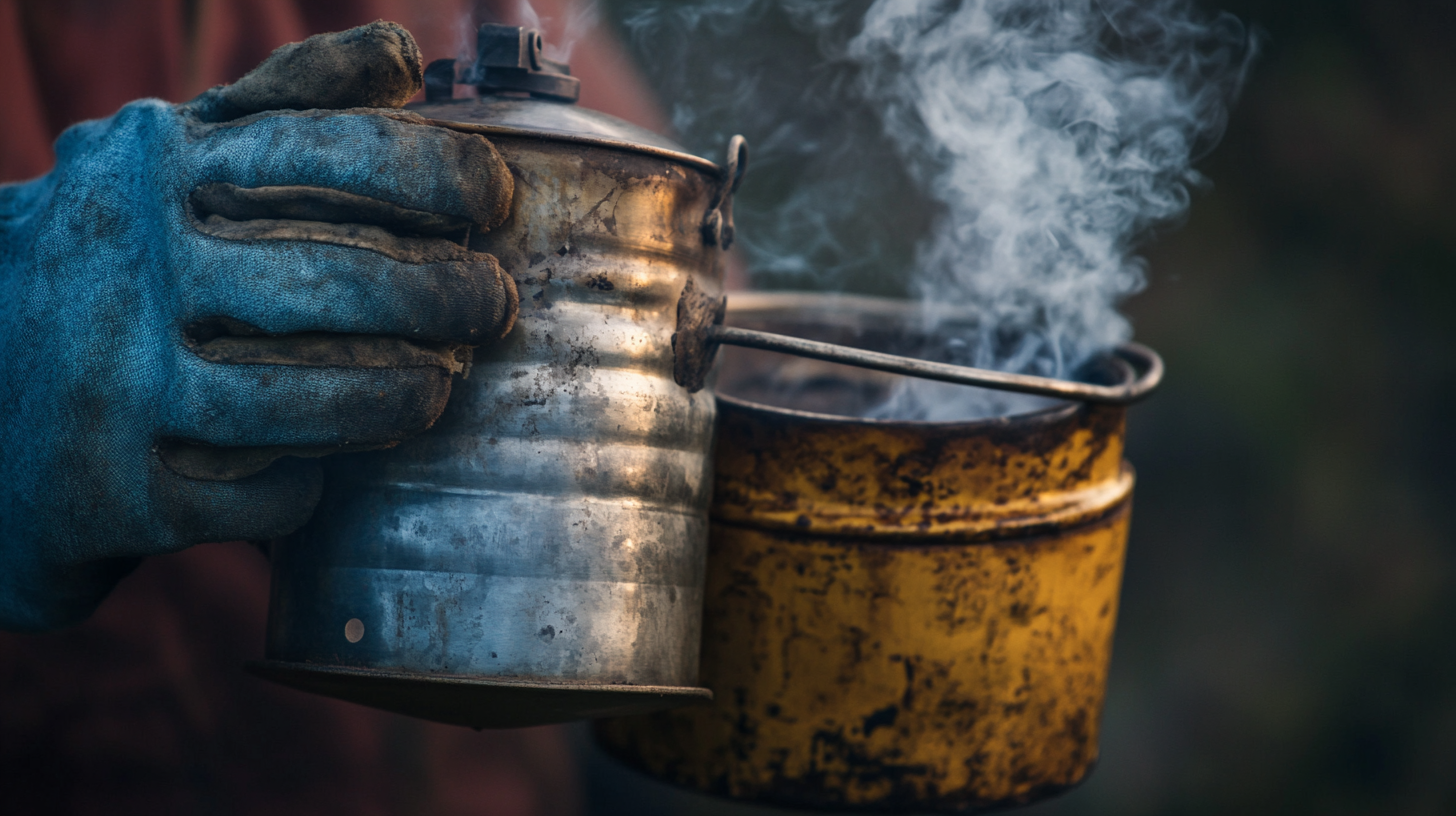Master beekeeping smoker techniques with 7 expert tips for safe hive management. Learn proper lighting, fuel selection, and safety protocols for successful beekeeping.
Table of Contents
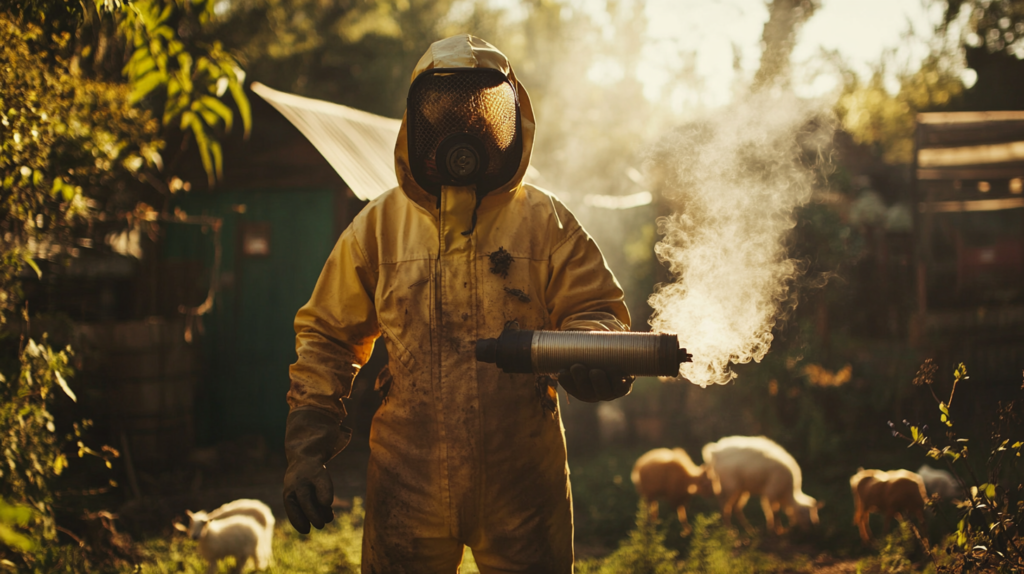
When you’re managing a backyard farm with various animals and considering adding bees to your agricultural setup, understanding how to properly use a beekeeping smoker becomes crucial for both your safety and the wellbeing of your bee colonies. A beekeeping smoker is an essential tool that helps calm bees during hive inspections, making it safer for farm owners to manage their apiaries alongside other livestock and pets.
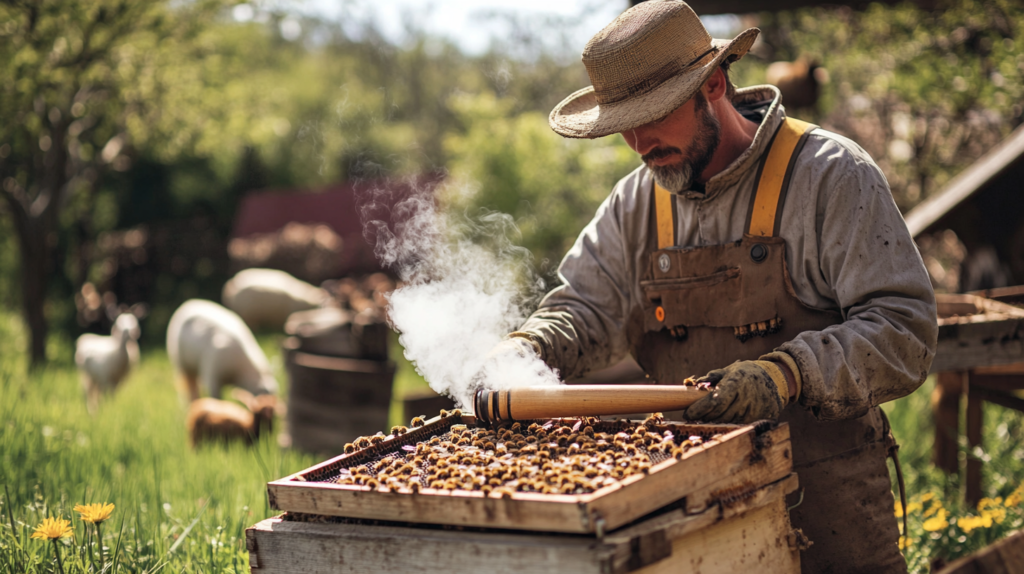
Whether you’re a seasoned farm owner looking to diversify your agricultural portfolio or a beginner exploring sustainable farming practices, mastering the art of using a beekeeping smoker will significantly improve your beekeeping success. This comprehensive guide will walk you through seven powerful tips that will transform you from a nervous novice into a confident beekeeper who can safely manage hives while maintaining harmony with your other farm animals.
Understanding Your Beekeeping Smoker: The Foundation of Safe Beekeeping
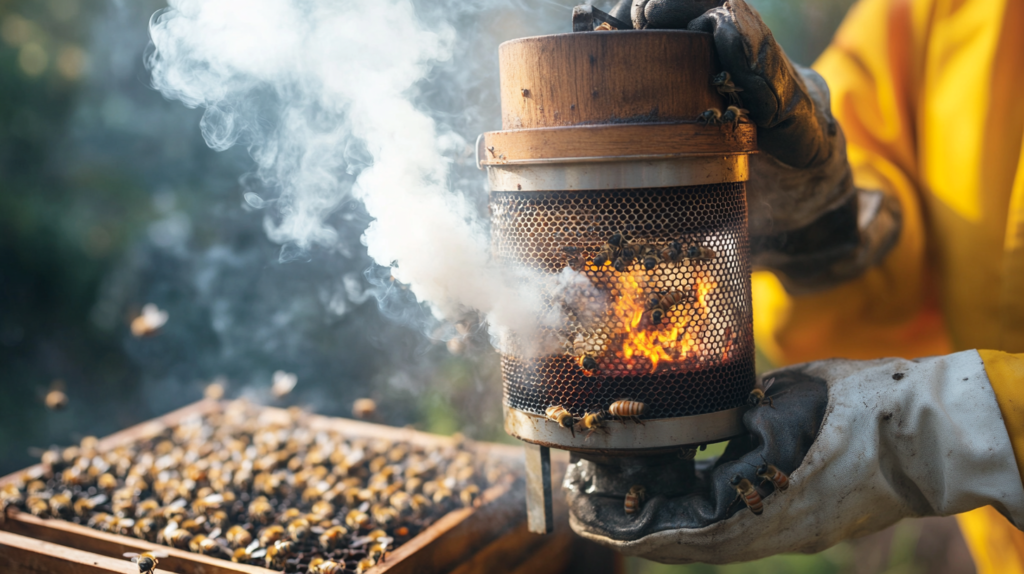
Before diving into advanced techniques, it’s essential to understand what makes a beekeeping smoker such a vital tool for farm-based apiaries. The smoker works by producing cool, white smoke that masks the alarm pheromones bees release when they perceive a threat. This natural response helps create a calmer environment during hive inspections.
According to the National Honey Board, proper smoker use can reduce bee stings by up to 90% during routine hive management. For farm owners who often work with protective gear around other animals, this dramatic reduction in defensive behavior makes beekeeping much more manageable alongside daily farm operations.
Components of a Quality Beekeeping Smoker
A professional-grade beekeeping smoker consists of several key components:
- Fire chamber: Where fuel burns to create smoke
- Bellows: Provides controlled airflow to maintain combustion
- Nozzle: Directs smoke precisely where needed
- Safety guard: Protects hands from heat
- Fuel grate: Supports burning materials and promotes airflow
Tip 1: Master the Art of Proper Fuel Selection
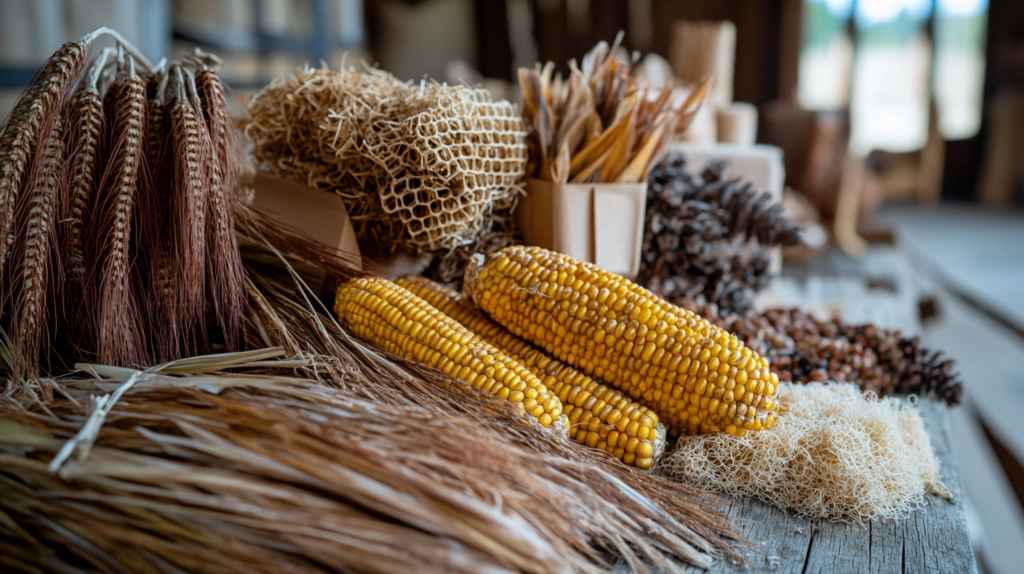
The foundation of effective beekeeping smoker operation lies in choosing the right fuel materials. Unlike backyard fire pits or farm burn piles, smoker fuel must burn slowly, produce cool white smoke, and remain non-toxic to both bees and humans.
Best Fuel Options for Farm-Based Beekeeping
Natural Materials from Your Farm:
- Dried pine needles (excellent starter material)
- Corn cobs (long-burning and readily available on farms)
- Dried grass clippings (from pesticide-free areas only)
- Burlap or untreated cotton materials
- Paper egg cartons (chemical-free varieties)
Commercial Fuel Options:
- Compressed wood pellets
- Sumac bobs (traditional choice among professional beekeepers)
- Punk wood or rotted wood pieces
- Commercial beekeeping fuel cartridges
Fuel Safety Guidelines
Never use materials that could harm your bees or contaminate honey production:
- Avoid synthetic materials or treated lumber
- Skip petroleum-based products
- Don’t use materials exposed to pesticides or herbicides
- Steer clear of glossy papers or magazines
A study by the American Beekeeping Federation found that beekeepers using inappropriate smoker fuels experienced 34% higher colony stress levels compared to those using recommended natural materials.
Tip 2: Perfect Your Lighting Technique for Consistent Results
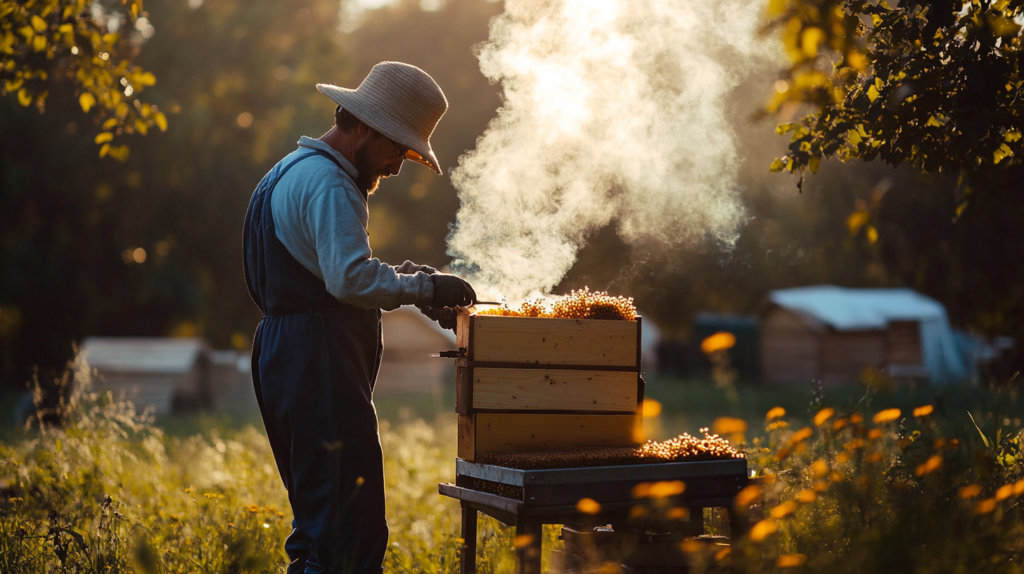
Learning how to use a beekeeping smoker effectively starts with mastering the lighting process. Consistent, reliable ignition ensures you’ll never be caught unprepared during hive inspections, especially important when coordinating beekeeping activities with other farm duties.
Step-by-Step Lighting Process
- Prepare your base material: Start with easily ignitable tinder like dry pine needles or shredded paper
- Light the base: Use matches or a lighter to ignite your starter material
- Add fuel gradually: Once flames establish, add larger fuel pieces slowly
- Pump the bellows: Use short, controlled pumps to encourage combustion
- Build your fuel bed: Layer materials to create sustained burning
- Test smoke production: Ensure you’re producing cool, white smoke before approaching hives
Professional Lighting Tips
- Cold smoker test: Your smoker should produce smoke you can comfortably hold your hand in
- Fuel layering: Alternate between fine and coarse materials for optimal burn
- Weather considerations: Adjust fuel moisture content based on humidity levels
- Pre-inspection preparation: Light your smoker 10-15 minutes before hive work
Tip 3: Master Smoke Application Techniques for Maximum Effectiveness
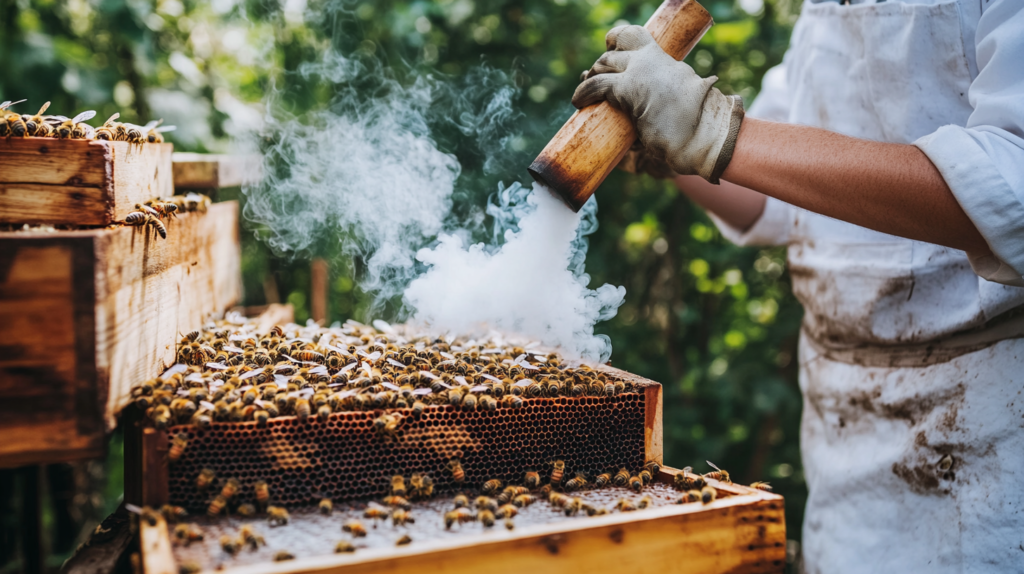
Proper smoke application transforms a potentially dangerous hive inspection into a calm, controlled process. Understanding when, where, and how much smoke to apply is crucial for maintaining bee colony health while ensuring your safety during farm operations.
Strategic Smoke Placement
Initial Approach Protocol:
- Apply 2-3 gentle puffs at the hive entrance
- Wait 30 seconds for bees to respond
- Add light smoke across the top bars before removing the cover
- Use minimal smoke—less is often more effective
During Inspection Techniques:
- Direct smoke along frame tops, not directly onto bees
- Use the “smoke curtain” method between yourself and defensive bees
- Apply smoke to areas where bees cluster or show agitation
- Maintain consistent, light smoke production throughout inspection
Common Application Mistakes to Avoid
Many farm-based beekeepers make these critical errors:
- Over-smoking: Excessive smoke stresses bees and can affect honey flavor
- Hot smoke application: Burns or injures bees, increasing defensive responses
- Poor timing: Smoking too early or too late reduces effectiveness
- Direct targeting: Blowing smoke directly onto bees rather than around them
Research from the University of Georgia’s Extension Service indicates that proper smoke application techniques can reduce inspection time by 40% while improving bee colony acceptance of human presence.
Tip 4: Prioritize Safety Protocols for Farm-Integrated Beekeeping
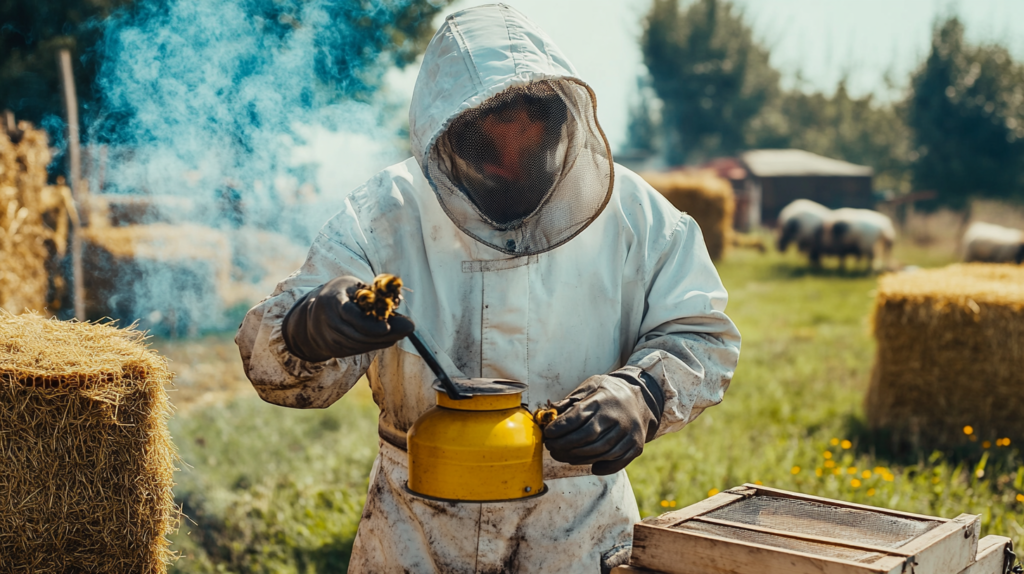
When managing beehives alongside other farm animals and daily agricultural activities, safety protocols become even more critical. Your beekeeping smoker safety routine should integrate seamlessly with your overall farm safety practices.
Personal Protective Equipment (PPE) Integration
Essential Safety Gear:
- Full bee suit with attached veil
- Leather gloves (or ventilated beekeeping gloves)
- Closed-toe boots with smooth surfaces
- Smoker safety guard or heat-resistant gloves
- Emergency sting treatment kit
Farm-Specific Considerations:
- Keep smoker away from hay storage and dry vegetation
- Maintain clear exit paths away from other livestock
- Store protective gear separately from animal feed areas
- Establish “bee work only” tools to prevent cross-contamination
Fire Safety and Smoker Management
Pre-Use Safety Checks:
- Inspect smoker for cracks or damage
- Ensure bellows function properly
- Clear area of flammable materials
- Have water source readily available
- Check wind direction and weather conditions
During Operation Protocols:
- Never leave a lit smoker unattended
- Keep smoker on non-flammable surface
- Monitor fuel levels throughout use
- Maintain proper ventilation in enclosed areas
- Stay aware of smoke direction relative to other farm animals
Post-Use Safety Routine:
- Allow smoker to cool completely before storage
- Dump ashes in safe, designated area
- Clean and inspect equipment after each use
- Store in fire-safe location away from combustibles
Tip 5: Maintain Your Equipment for Long-Term Success

Regular maintenance of your beekeeping smoker ensures reliable performance throughout busy farming seasons. Well-maintained equipment reduces the risk of failure during critical hive inspections and extends the lifespan of your investment.
Routine Maintenance Schedule
After Each Use:
- Remove ash and unburned fuel debris
- Check bellows for proper function
- Inspect nozzle for blockages
- Wipe exterior clean of residue
- Ensure all moving parts operate smoothly
Weekly Maintenance (Active Season):
- Deep clean fire chamber with wire brush
- Lubricate bellows hinges with appropriate oil
- Check for rust or corrosion spots
- Test ignition and smoke production
- Replace worn gaskets or seals
Seasonal Maintenance:
- Complete disassembly and thorough cleaning
- Sand and repaint rusted areas
- Replace worn components
- Service or replace bellows if damaged
- Store properly for off-season protection
Troubleshooting Common Issues
| Problem | Likely Cause | Solution |
| Poor smoke production | Clogged air vents | Clean bellows and air passages |
| Difficulty lighting | Wet or poor fuel | Use dry, appropriate materials |
| Smoke too hot | Insufficient fuel bed | Add more fuel, reduce airflow |
| Bellows not working | Damaged leather/fabric | Repair or replace bellows |
| Rust formation | Moisture exposure | Clean, dry, and store properly |
Professional Maintenance Tips
Dr. Sarah Mitchell, Extension Apiculturist at State University, recommends: “Farm-based beekeepers should treat smoker maintenance like any other essential farm tool. Regular care prevents equipment failure during critical times and ensures consistent performance across multiple hive inspections.”
Tip 6: Integrate Smoker Use with Overall Farm Management
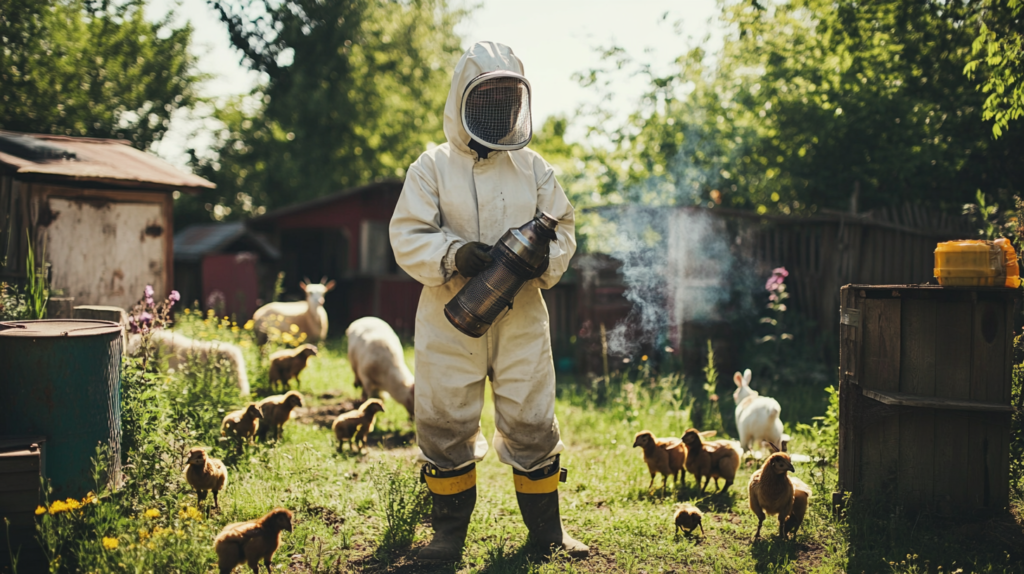
Successfully incorporating beekeeping into your existing farm operations requires strategic planning and coordination. Your beekeeping smoker use should complement, not conflict with, your other agricultural activities and animal care routines.
Timing Coordination Strategies
Daily Farm Schedule Integration:
- Plan hive inspections during calm weather periods
- Coordinate with livestock feeding and movement schedules
- Consider pollinator activity patterns around crop areas
- Schedule maintenance during low-activity farm periods
Seasonal Planning Considerations:
- Align hive management with crop cultivation cycles
- Plan queen replacement during optimal farm workflow periods
- Coordinate honey harvest with other farm product processing
- Schedule equipment maintenance with off-season farm repairs
Multi-Species Farm Considerations
Livestock Proximity Management:
- Maintain adequate distance between beehives and animal enclosures
- Use natural barriers like hedgerows or fencing
- Consider prevailing wind patterns when placing hives
- Train farm dogs and other animals to avoid bee areas
Crop Production Synergies:
- Position hives near crops requiring pollination
- Plan pesticide applications around bee activity schedules
- Coordinate bloom timing with hive strength management
- Use bee-friendly farming practices throughout your operation
Resource Sharing and Efficiency
Maximize efficiency by integrating beekeeping supplies with existing farm infrastructure:
- Store smoker fuel with other farm combustibles safely
- Use farm vehicles for transporting beekeeping equipment
- Share water sources between beekeeping and livestock operations
- Coordinate equipment purchases with other farm tool acquisitions
Tip 7: Advanced Techniques for Experienced Farm Beekeepers

Once you’ve mastered basic beekeeping smoker operation, advanced techniques can significantly improve your efficiency and effectiveness during complex farm-based beekeeping operations.
Weather-Adaptive Smoking Techniques
High Humidity Conditions:
- Use drier fuel materials to compensate for moisture
- Increase initial lighting time for proper fuel bed establishment
- Apply smoke more frequently in shorter bursts
- Monitor fuel consumption and reload more often
Windy Weather Protocols:
- Position yourself to use wind direction advantageously
- Increase smoke volume to compensate for dispersal
- Use heavier fuel materials for consistent burn
- Consider postponing inspections in extreme conditions
Temperature Extremes:
- Cold weather: Allow longer warm-up periods for equipment
- Hot weather: Monitor smoker temperature more carefully
- Adjust fuel types based on ambient temperature
- Modify inspection timing to avoid temperature stress
Advanced Smoke Management
Precision Smoking Techniques:
- Master the “smoke wall” method for aggressive colonies
- Learn targeted smoking for specific bee behaviors
- Develop muscle memory for consistent bellows pressure
- Practice smoke conservation during extended inspections
Multi-Hive Efficiency:
- Plan smoker fuel loads for multiple hive inspections
- Develop systematic approaches for hive-to-hive management
- Master rapid smoker re-lighting techniques
- Coordinate smoke application with assistant beekeepers
Professional-Level Problem Solving
Defensive Colony Management:
- Recognize signs requiring increased smoke application
- Develop strategies for highly defensive genetic lines
- Master smoke timing for queen replacement procedures
- Learn advanced calming techniques for stressed colonies
Emergency Protocols:
- Rapid smoker lighting for unexpected situations
- Managing smoker failures during critical procedures
- Coordinating with farm emergency response plans
- Developing backup smoking systems for reliability
Integrating Technology and Traditional Methods
Modern farm operations increasingly benefit from combining traditional beekeeping wisdom with contemporary technology. Smart farm management systems can help optimize your beekeeping smoker use and overall apiary management.
Digital Monitoring Integration
Hive Monitoring Systems:
- Use sensors to determine optimal inspection timing
- Monitor colony health remotely to plan smoker use
- Track weather conditions for smoker fuel selection
- Coordinate beekeeping activities with farm management software
Documentation and Record Keeping:
- Digital logs of smoker fuel performance
- Weather correlation tracking for smoking effectiveness
- Colony response documentation for technique refinement
- Integration with overall farm production records
Sustainable Practices
Environmental Stewardship:
- Source smoker fuel from sustainable farm waste
- Minimize environmental impact of smoking activities
- Coordinate with organic farming certification requirements
- Develop closed-loop systems for fuel production and use
Economic Efficiency:
- Calculate cost-effectiveness of different fuel sources
- Optimize smoker maintenance schedules for farm budgets
- Coordinate equipment purchases with farm capital planning
- Maximize return on investment through proper technique
Frequently Asked Questions (FAQ)
What type of fuel works best for a beekeeping smoker on a farm?
Natural materials from your farm work exceptionally well for smoker fuel. Dried corn cobs, pine needles, and untreated burlap provide excellent, long-burning smoke. Avoid any materials exposed to pesticides or herbicides, and never use synthetic materials that could harm your bees or contaminate honey production.
How often should I clean my beekeeping smoker during active farming season?
Clean your smoker after each use by removing ash and debris, and perform a thorough weekly cleaning during active beekeeping season. This includes checking bellows function, clearing air passages, and inspecting for rust or damage. Regular maintenance prevents equipment failure during critical hive inspections.
Can I use my beekeeping smoker around other farm animals safely?
Yes, but maintain proper safety protocols. Keep the lit smoker away from hay storage and dry vegetation, ensure adequate distance from livestock areas, and always have water nearby. Plan your beekeeping activities when other animals are secure and away from the immediate work area.
How do I know if I’m using too much smoke during hive inspections?
Signs of over-smoking include bees clustering tightly together, unusual agitation after initial calming, or bees moving rapidly away from smoke application areas. Proper smoking should calm bees without causing stress. Use light, intermittent puffs rather than continuous heavy smoke.
What should I do if my smoker goes out during a hive inspection?
Stay calm and move slowly away from the hive without sudden movements. If you have a backup lighter, attempt to relight using remaining fuel. If relighting isn’t possible, slowly close the hive and retreat to a safe distance. Always carry backup lighting materials during inspections.
How can I coordinate beekeeping smoker use with my other farm activities?
Plan hive inspections during calm weather periods and coordinate with livestock feeding schedules. Consider wind patterns that might carry smoke toward other animals, and schedule major beekeeping activities during farm downtime when other operations won’t be disrupted.
For more expert pet care tips and product recommendations, visit BlithePet.com — your trusted source for pet wellness and backyard farming guidance.
Conclusion
Mastering the proper use of a beekeeping smoker is essential for any farm owner looking to successfully integrate bee colonies into their agricultural operation. These seven powerful tips provide the foundation for safe, effective hive management that complements your existing farm activities while ensuring the health and productivity of your bee colonies.
From selecting appropriate fuel materials found right on your farm to developing advanced techniques for challenging weather conditions, each aspect of smoker use contributes to your overall success as a farm-based beekeeper. Remember that consistency, safety, and respect for your bees will always yield the best results.
The integration of beekeeping into your backyard farm operation offers tremendous benefits—from improved crop pollination to additional income streams through honey production. By following these professional techniques and maintaining proper equipment care, you’ll develop the confidence and skills necessary to manage your apiary safely alongside your other beloved farm animals.
Have a similar experience with your beekeeping journey on your farm? Share it in the comments below!

